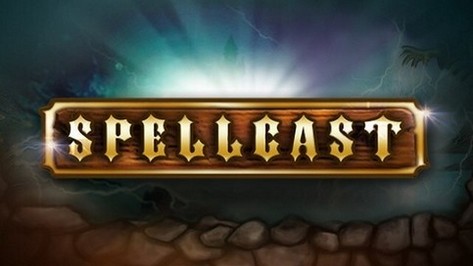Azərbaycanın ən yaxşı Loteria Nacional onlayn kazinosuna xoş gəlmisiniz!
Loteria Nacional kazinosu 2021-ci ildə yaradılıb və TechSolutions Group Ltd tərəfindən idarə olunur. Kazino diqqətinizi cəlb edəcək hər cür fantastik oyunlarla doludur. Əsas səhifə tünd sepiya fonu və bütün düymələri mis rəngdə olan əsl vizual ziyafətdir. Loteria Nacional kazinosu müxtəlif canlı oyun kataloqu xüsusi oyunlar, promosyonlar, turnirlər və canlı diler lobbilərinə keçidlər təklif edir!






| Rəsmi sayt | triptoazerbaijan.com |
| Yaranma ili | 2021 |
| Lisenziya | Curacao |
| Təsisçisi | TechSolutions Group Ltd |
| Dəstək | Canlı söhbət, e-poçt, tez-tez verilən suallar |
| Oyun növləri | Kazino, rulet, blackjack, slot maşınları və s |
Loteria Nacional kazinosu strategiyasının əhəmiyyəti
Loteria Nacional onlayn kazinosunda oyunun uğuru böyük ölçüdə aydın strategiyanın mövcudluğundan asılıdır. Hətta slot, blackjack və ya rulet kimi şans elementi olan oyunlarda belə, strategiya hazırlamaq və tətbiq etmək oyunçunun uğur şansını artırmasına kömək edə bilər.
Loteria Nacional onlayn kazinosunda strategiya oyununuzu planlaşdırmaq, mərclər təyin etmək, pul vəsaitlərini idarə etmək və oyun zamanı yaranan müxtəlif vəziyyətlərə uyğunlaşa bilməkdən ibarətdir. Bu, oyunçulara daha nəzarətli və ehtiyatlı olmağa kömək edir, sıradanlıq və pul itirmə riskini azaldır.
Başa düşmək lazımdır ki, strategiya 100% müvəffəqiyyətə zəmanət vermir, lakin bu, oyunçuya şanslarını maksimum dərəcədə artırmağa və şansın təsirini azaltmağa imkan verir. O, müxtəlif vəziyyətlərdə oyun qaydalarının, ehtimalların və optimal həllərin təhlilinə əsaslanır! Loteria Nacional kazinosu oynamağa başlayın, məsləhətlərimizə əməl edin və zəmanətli cekpot qazanmaq şansınızı artırın!
Loteria Nacional kazinosu kazinosunda necə udmaq olar və bu nədən asılıdır?
Bütün lisenziyalı platformalar sertifikatlı slot maşınlarına girişi təmin edir. Onun tərtibatçıları oyunçulara təsadüfi ədədlər generatoru vasitəsilə mükafat kombinasiyaları qazanmağı təklif edə bilər. Bu proqramın tərtibatçılar tərəfindən istifadəsi hər bir oyunçunun oyun sahəsində ədalətli qazanc əldə edəcəyinə inanması deməkdir. Proqramda qurumun rəhbərliyinin müdaxiləsi nəzərdə tutulmur.
Qumar məzmunu ilə Loteria Nacional onlayn kazinosunda necə qalib gələcəyinizi anlamaq üçün seçilmiş slot maşınlarının texniki parametrlərini təyin etməlisiniz. Potensial qazanc və qazancın tezliyi aşağıdakı amillərdən təsirlənir:
- Aktiv xətlərin, makaraların sayı.
- Bonuslar, xüsusi simvollar. Onlar potensial qazancı əhəmiyyətli dərəcədə artırır və hər bir oyunçunun perspektivlərini müəyyənləşdirir.
- Dəyişkənlik, variasiya, gəlirlər. Bu texniki parametrlər hər bir oyunçu üçün şanslı kombinasiyalar və şansların tezliyini müəyyən edir.
- Loteria Nacional kazinosu uduşlar da taledən asılıdır. Risklər var, amma şans sizin tərəfinizdədirsə, böyük bir mükafat qazana bilərsiniz!
Loteria Nacional onlayn kazinosunda dəstək xidməti
Loteria Nacional onlayn kazino veb-saytında müxtəlif oyunlar və onları necə oynamaq barədə faydalı məlumat verən çoxlu faydalı təlimatlar var. Oyunçular həmçinin istənilən vaxt açıla bilən canlı söhbət seçiminə sahib olacaqlar. Veb sayt bir neçə dildə mövcuddur. Canlı söhbət 24/7 mövcuddur və siz e-poçt vasitəsilə də sual verə bilərsiniz.
Loteria Nacional onlayn kazinoda e-poçt ünvanınız və adınızla vebsaytda mesaj buraxa və sorğunuzun xarakterini seçə biləcəyiniz bizimlə əlaqə səhifəsi də var. Sual kateqoriyaları: depozitlər və çıxarmalar, ümumi, rəylər, oyundaxili, canlı oyunlar və ya səhvlər və s.!




Loteria Nacional kazinosu oyunlar
Əsas səhifədə slot, blackjack, rulet, sürətli oyunlar, mərclər və s. bağlantıları olan video var. Rolun altında müxtəlif əsas oyun provayderləri və oyunçuların tam siyahını görə biləcəyi açılan menyu var. Loteria Nacional-da kazino oyunları 120-dən çox müxtəlif tərtibatçı tərəfindən yaradılmışdır ki, bu da ən böyük onlayn kazinolar arasında belə böyük çeşiddir. Kazinonu daha da cəlbedici etmək üçün müxtəlif turnirlər, promosyonlar və VIP proqramlar təklif olunur. Şöhrət Zalında oyunçu günün və ya həftənin ən yaxşı qaliblərinin siyahısını tapacaq və cekpotların bəzilərinin nə qədər böyük olduğunu görə biləcək.
Loteria Nacional onlayn kazinosunda yuvalar
Yuvalar istənilən onlayn kazinonun mərkəzindədir və NLoteria Nacional heyrətamiz kolleksiyaya malikdir. ELK Studios, BGaming, NetEnt, QuickSpin və Pariplay kimi oyunçulara artıq tanış olan tərtibatçıların oyunları var. Burada kazino həvəskarları tanış olmadıqları bir çox studiyalar tapacaqlar, lakin onların bəzi maraqlı oyunları var. Uğurlu Loteria Nacional kazinosu Wolf Gold, Gold Rush Johnny Cash, Buffalo Kings Megaways və Mustang Gold kimi ən yaxşı oyunları təklif edir. Digər seçim isə Populyar Slotlar kateqoriyasında hazırda trend olanları görməkdir. Bunlara əlavə olaraq Bonus Buy və Drops & Wins kateqoriyaları var ki, burada həvəskar oyunçular hər cür bonus oyunları və əla xüsusiyyətlərlə dolu çoxlu slot tapacaqlar.
Loteria Nacional kazinosu: Stolüstü Oyunlar
Blackjack və Rulet bölmələri stolüstü oyun həvəskarları üçün gerçəkləşən bir xəyaldır. Burada oyunçular məşhur stolüstü oyunların böyük kolleksiyalarını araşdıra biləcəklər. Oyunun ənənəvi versiyaları, həmçinin xüsusiyyətləri, yan mərcləri və böyük pul mükafatları olan təkmilləşdirilmiş versiyaları var. Bir az qəribə olan odur ki, baccarat və bir çox digər kart oyunları blackjack kateqoriyasına daxil edilmişdir, lakin bu, əslində sövdələşməni pozan deyil.
Lisenziyalaşdırma və tənzimləmə
Loteria Nacional kazinosu Curaçao hökuməti tərəfindən lisenziyalaşdırılan TechSolutions Group Ltd-ə məxsusdur. Bu lisenziya şirkətə öz kazinolarını dünyanın bir neçə ölkəsində təklif etməyə imkan verir, lakin hamısında deyil. Kazino yalnız Azərbaycandan olan oyunçular üçün uyğundur.
Loteria Nacional kazinosunda oynamağa hazırlaşmaq üçün məsləhətlər
Etibarlı kazino seçimi. Onlayn kazinoda oynamağa başlamazdan əvvəl ilk addım, məsələn, Loteria Nacional kazinosu kimi etibarlı və etibarlı operator seçməkdir. Kazinonun qanuniliyini təsdiq edən lisenziyası və oyunun ədalətli olmasını təmin etmək üçün mütəmadi yoxlamalar apardığına əmin olun. Digər oyunçuların kazinolarının reytinqlərinə və rəylərinə diqqət yetirin. Təhlükəsiz ödəniş üsullarının mövcudluğunu və şəxsi məlumatların qorunmasını da nəzərə alın.
Şərtlərin öyrənilməsi. Oynamağa başlamazdan əvvəl kazinonun şərtlərini diqqətlə oxumaq vacibdir. Hər bir oyunun öz xüsusiyyətləri və effektiv oynamaq üçün başa düşülməli olan qaydaları ola bilər. Bahislər, maksimum və minimum limitlər, ödəmə qaydaları və oyunun xüsusi xüsusiyyətləri haqqında məlumat əldə edin. Bu, oynayarkən xoşagəlməz sürprizlərdən qaçmağa kömək edəcək və məlumatlı qərarlar qəbul etməyə imkan verəcəkdir.
Bonuslar və promosyonlardan istifadə. Loteria Nacional onlayn kazinoları tez-tez oyunçuları üçün müxtəlif bonuslar və promosyonlar təklif edirlər. Bunlara slot oyunlarında pulsuz fırlanmalar, depozit bonusları və ya loyallıq proqramları daxil ola bilər. Bu təklifləri öz xeyrinizə istifadə edin, lakin mərc tələbləri və bonusların geri qaytarılması şərtləri ilə bağlı diqqətli olun. Hər hansı bir bonusu qəbul etməzdən əvvəl onun alınması və istifadəsi şərtlərini diqqətlə oxuyun!





Loteria Nacional kazinosu canlı oyunlar
Canlı Dilerlərin lobbisi kazino həvəskarlarını birbaşa Loteria Nacional kazinosunun canlı oyunlar kolleksiyasına aparacaq. Canlı diler oyunlarının, eləcə də oyun şoularının, bəxt oyunları çarxının və poker otaqlarının böyük seçimi var. Oyunların böyük əksəriyyəti sənayenin aparıcı tərtibatçıları Evolution Gaming, Pragmatic Play Live və Playtech tərəfindən təmin edilir. Bəzi əsas məqamlara Lightning Roulette, Dead or Alive Salon, Dream Catcher və One Blackjack-in tərtibatçıları daxildir. Baccarat, blackjack və ya rulet sevirsinizsə, bu sizin üçün yerdir!
Loteria Nacional onlayn kazinosu haqqında nəticələr
Loteria Nacional onlayn kazinosunda uğurlu oynamaq təkcə şans deyil, həm də yaxşı düşünülmüş strategiya tələb edir. İstər qumar dünyasında yeni, istərsə də təcrübəli oyunçu olmağınızdan asılı olmayaraq, müəyyən məsləhətlərdən və strategiyalardan istifadə edərək uğur şansınızı artıra bilərsiniz.
Oyundan əvvəl düzgün hazırlaşmaq həmişə vacibdir. Loteria Nacional kimi etibarlı və etibarlı kazino seçin! Oyunun qaydalarını və şərtlərini öyrənin və bankrollunuzu diqqətlə idarə edin. Bonuslar və promosyonlardan istifadə də sizə əlavə üstünlüklər verə bilər.
Unutmayın ki, Loteria Nacional onlayn kazino əyləncə növüdür və oyunun əsas məqsədi əyləncə olmalıdır. Ağıllı oynayın, pulunuzu idarə edin və onlayn kazinoların təklif etdiyi həyəcandan həzz alın! Loteria Nacional ən yaxşı oyunları tapmaq üçün əla yerdir!
Loteria Nacional kazinosu kazinosunda video poker
Video poker həvəskarları oyunları Blackjack bölməsində və ya poker axtarışı ilə tapa bilərlər və seçim üçün 50-dən çox oyun var. Video poker oyunları əsasən Betsoft Gaming, BGaming, Habanero və Evoplay Entertainment tərəfindən təmin edilir, baxmayaraq ki, digər tərtibatçıların bəzi oyunları da var.
Digər Loteria Nacional kazinosu oyunları
Slotlara, canlı oyunlara və ya adətən oynadığınız hər hansı bir oyuna fasilə vermək istəyirsinizsə, həmişə veb saytın Sürətli Oyunlar bölməsinə baxa bilərsiniz. Bu, sizə öyrənmək üçün asan olan və sizə saatlarla sonsuz əyləncə bəxş edə biləcək ani oyunlar toplusu ilə təmin edəcək. Çoxlu zar oyunları, binqo, keno, mina tarama gəmisi, danışıq kartları və digər sürətli oyunlar sizi gözləyir.